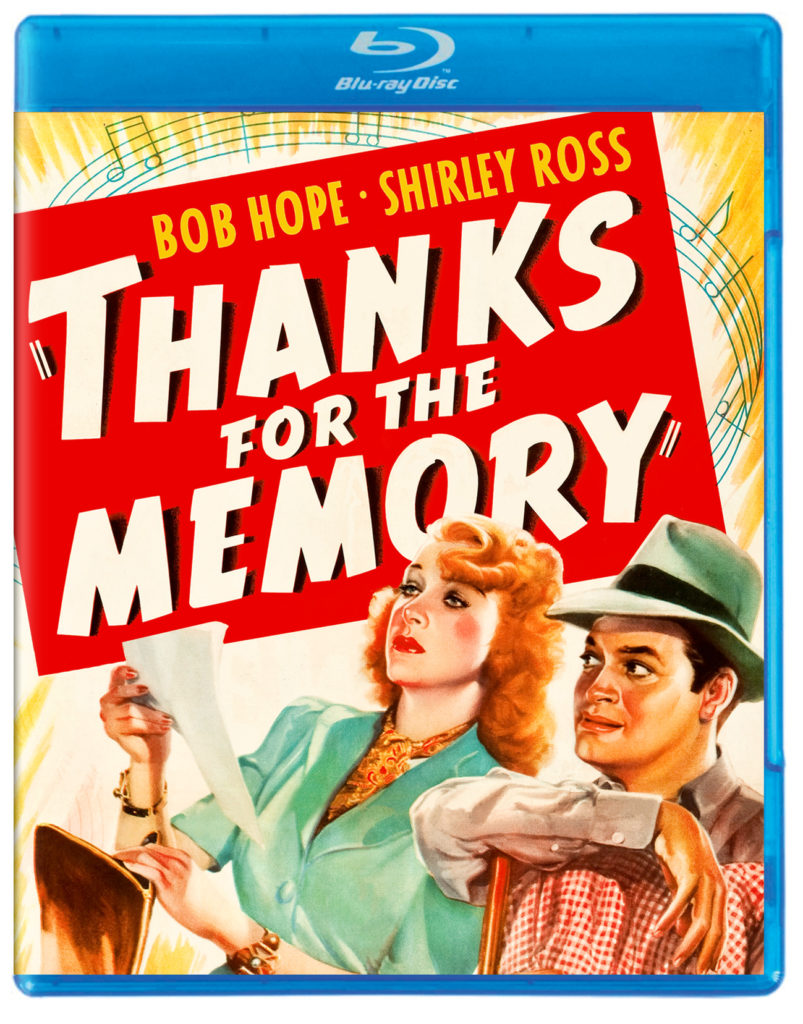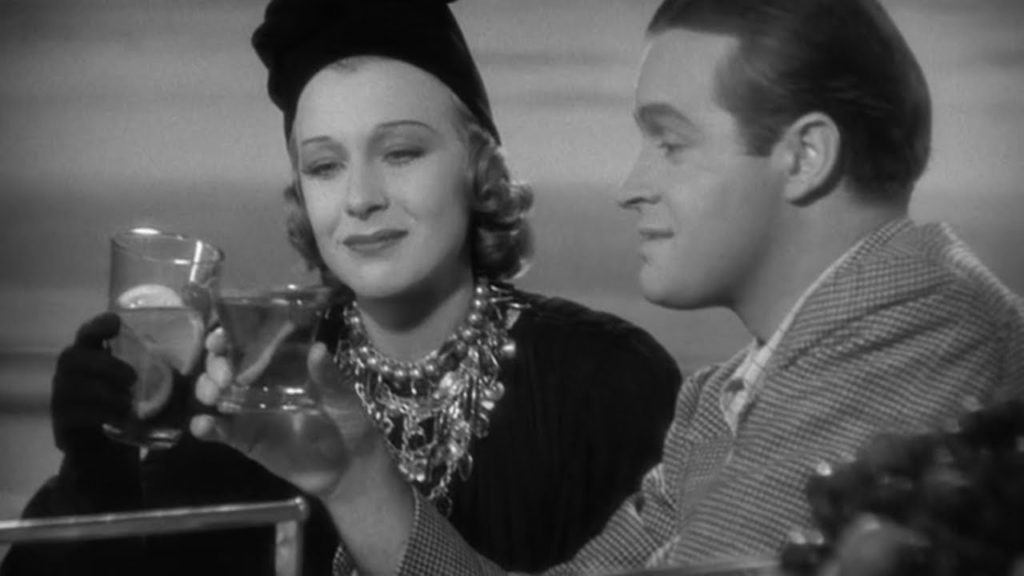Hope And Ross Play Second Fiddle To The Title Song
DIRECTED BY: GEORGE ARCHAINBAUD/1938
BLU-RAY STREET DATE: MARCH 21/KINO LORBER STUDIO CLASSICS

Here’s Bob teamed for the second of three times with the lovely Shirley Ross, a married couple bouncing off each other in a limp confection heavy on the proto-nostalgia for the movie’s title, which was lifted from the insta-hit the two sang together in Paramount’s The Big Broadcast of 1938 earlier that year. Hope and Ross, in that previous film, are a divorced couple, and the song is a winking tell-all of dreams and plans sidelined by the real-world barriers of a crumbling marriage. Not exactly the Depression-era uplift its longevity implies, but here the song – too pervasively successful for Paramount not to squeeze it for more cash – is given a back story of sorts, showing the couple (not the same couple, but the same actors) living in “squalor” as defined by the Hollywood dream factory of the 1930s: a spacious New York apartment ready-made for ad-hoc cocktail parties and a constant flow of uninvited guests. Nevertheless, the two are struggling for money and living on a shoestring they might just have for dinner.
As a movie, it’s not much. Thrown together quickly to bank on the popularity of the song, it’s as thin as a sit-com episode. But as a Hope picture, it’s helpful as a line of demarcation. It’s his fourth feature role, but the first that puts him in as the main focus of the plot. He’s a nascent novelist without enough time for his job and his passion, so Ross tells him to drop his small side job, stay home, focus on the book, and let her go back to her old gig…as a fashion model. She does, and we watch as Hope becomes an aproned house husband, juggling writing time with his mounting household responsibilities – cooking, dealing with the landlord, addressing a constant string of phone calls and drop-in visitors. The gender roles are switched and played for laughs but the conceit winds up telling us all we need to know about a man from ’38 and just where he thinks his woman should stay.
While Hope occupies center stage for the first time, he’s still not the Hope we later come to know. Here he hasn’t quite leaned into that righteous coward schtick he would a few pictures later. That would be The Cat and the Canary (1939), a horror parody that allows him to be glibly above the creepy tropes, yet vainly skittish inside his shaking boots. That was followed the next year by Road to Singapore, and his character was off and running. But in Thanks for the Memory, he’s proto-Bob, amusing, but often posturing lines like an assumed leading man, with jokes offered up weakly by a script that feels half-written, especially coming from the mouth we so associate with his usually sharp, tossed-off barbs and dead-pan delivery.

The movie often sidelines this glorified premise with random moments involving a guest list of drop-ins by Paramount’s roster of character actors: Eddie “Rochester” Anderson, Charles Butterworth, Jack Norton, Roscoe Karns, and the list goes on. Some scenes feel like a dip into Vaudeville, giving space for, among other things, the tried and true “drunk guy” and the ever-popular “kept husband”. Otto Kruger, usually a bad guy, here an accommodating romantic, pops in as Ross’s ex-fiancé to provide the only real plot wrench, since, you know, he still loves her. But all is right and well when the magic song is sung – the final moments of the film, when the strain of life has driven the two to their furthest point of breaking, they sing the song, as they did in Big Broadcast, which can only end in an all-restoring embrace, and Adolph Zukor’s exponentially increased take-home pay.
Michael Schlesinger provides a commentary track on Kino Lorber’s otherwise bare-bones Blu-ray, enlightening us on the facts of the production and its status as essentially a re-hash of Albert Hackett and Frances Goodrich’s original play, Up Pops the Devil, which had already been adapted once into a film, in 1931, starring Carol Lombarde and Norman Foster. The pedigree (the writers went on to pen The Thin Man [1934], Father of the Bride [1950], and other greats) does less to enhance our enjoyment as it does to paint a picture of Paramount in scramble mode to proffer a quickie before the song’s popularity scrammed. Now we all know that the song lived on as the sweetly-billowing orchestral cloud that would precede any appearance by Bob Hope anywhere he went the rest of his career. One wonders, watching this flimsy little film, how much of that longevity was to do with it, or with the singular power of the song itself wedded to the potency of an entertainer like Hope.
Images are not meant to represent the picture quality of Kino Lorber’s Blu-ray presentation.

